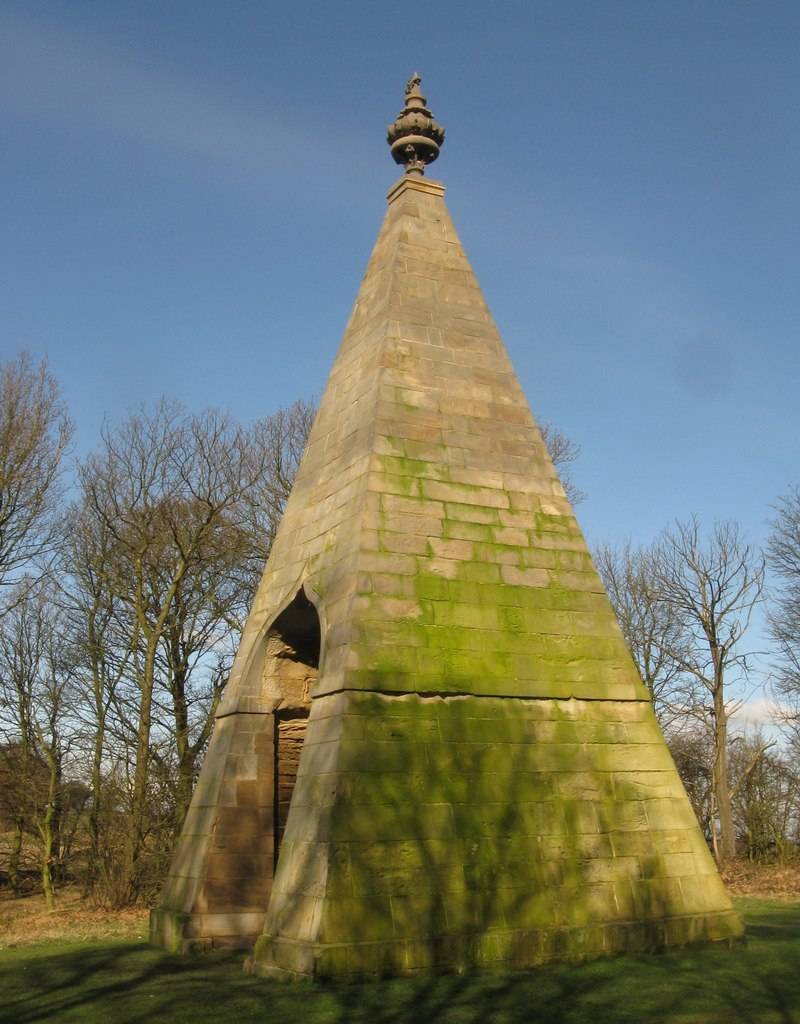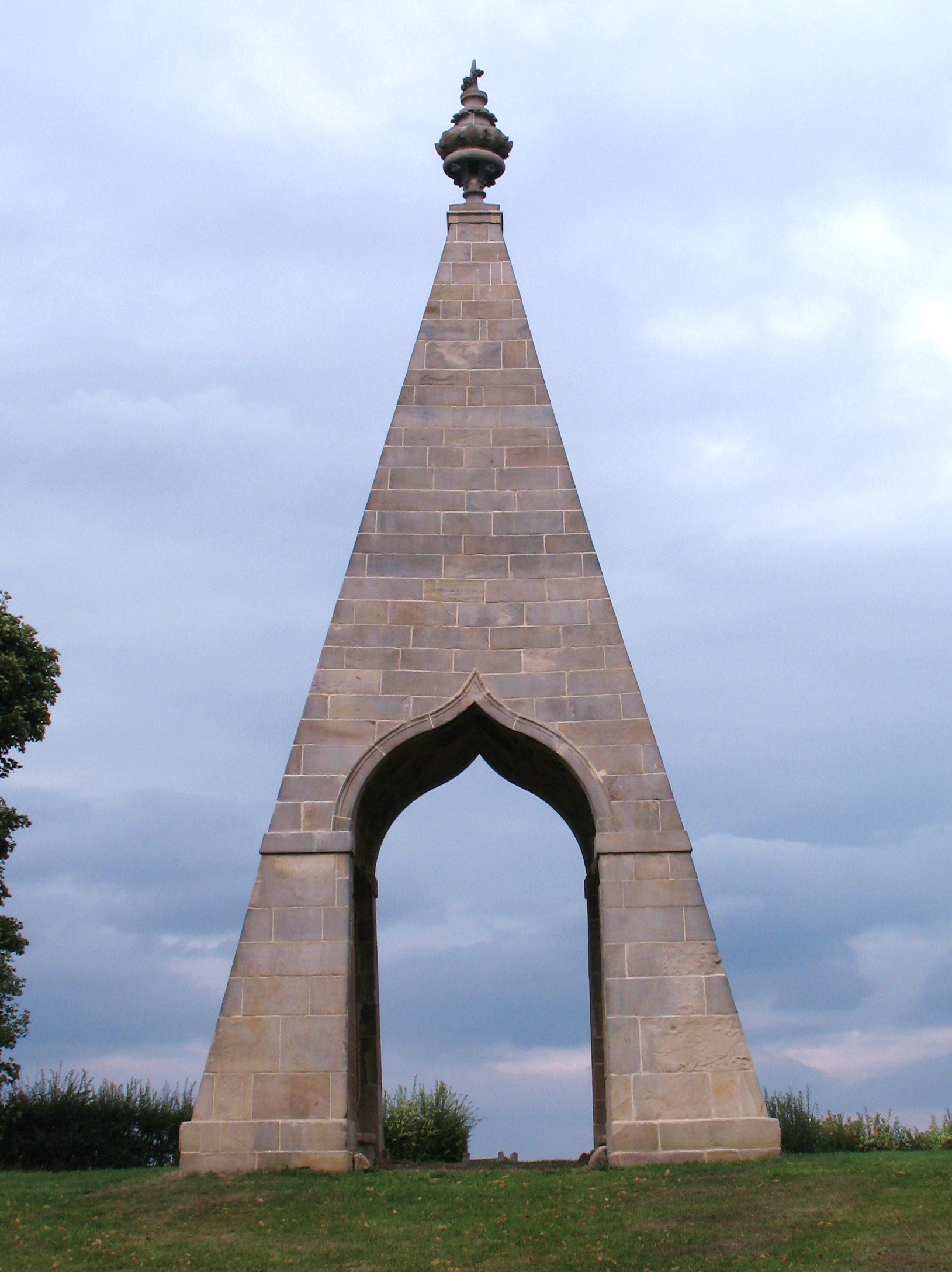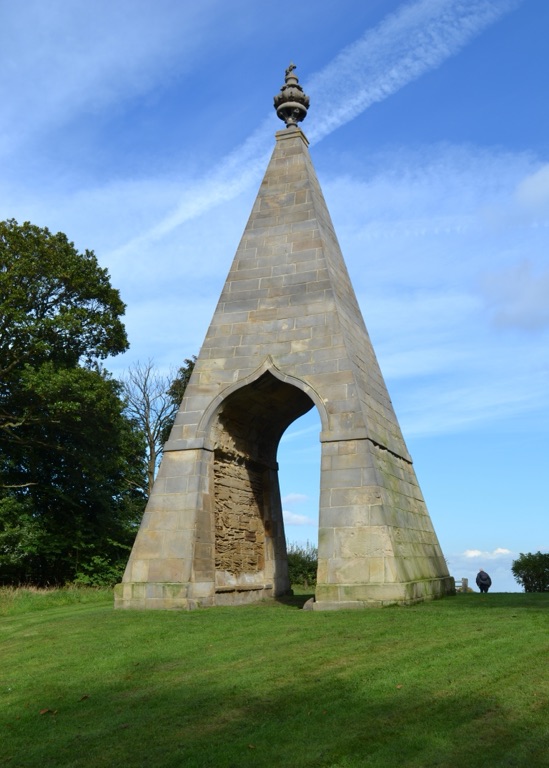The Needle’s Eye Pyramid is a fascinating folly located in Wentworth, South Yorkshire, England. It stands as a testament to the whimsical architecture of the 18th century. This stone structure, resembling a needle due to its conical shape, has intrigued visitors and historians alike. Its origins and purpose have been the subject of speculation, adding to its allure as a historical landmark.
Get your dose of History via Email
Historical Background of The Needle’s Eye, Wentworth
The Needle’s Eye was built in the 18th century, though its exact date of construction remains unclear. It was commissioned by Charles Watson-Wentworth, the 2nd Marquess of Rockingham. The Marquess was a prominent political figure, serving twice as Prime Minister. The folly is situated within the vast Wentworth Woodhouse estate, which was the family seat of the Wentworths.
Local legend suggests that the Needle’s Eye was created following a wager. The Marquess supposedly bet that he could drive a coach and horses through the eye of a needle. The resulting structure, with its central archway, allowed him to win the bet. This tale, while unverified, adds a layer of mystique to its history.

No records indicate that the Needle’s Eye Pyramid was used as a decorative feature within the landscape of the estate. Its presence reflects the 18th-century trend of constructing follies—architectural structures built primarily for ornamentation or to make a statement.
The Needle’s Eye Pyramid is not just a quirky piece of architecture; it is also a symbol of the era’s wealth and the personal tastes of the Marquess. Its endurance over the centuries allows visitors to glimpse into the past and the grandeur of the Wentworth estate.
About The Needle’s Eye Pyramid in Wentworth
The Needle’s Eye is a stone folly standing approximately 45 feet high. Its most distinctive feature is the needle-like conical spire, which gives the structure its name. The folly is built from local sandstone, a common building material in the region during the 18th century.
The base of the Needle’s Eye is square, with each side featuring a classical arch. The arches are large enough to allow the passage of a small carriage, which aligns with the legend of the Marquess’s wager. The design incorporates elements of classical architecture, a popular style of the time.
Despite its age, the Needle’s Eye has remained relatively intact. The craftsmanship involved in its construction has ensured its longevity. The spire, although slender, has withstood the elements, a testament to the skill of its creators.

There are no elaborate decorations on the Needle’s Eye, which is typical for follies that often favored form over function. The simplicity of its design contrasts with the complexity of its construction, especially considering the technology available during the period.
At a glance
Country: England
Civilization: British
Age: 18th century (circa mid-to-late 1700s)
Conclusion and Sources
Reputable sources used in the creation of this article include:

